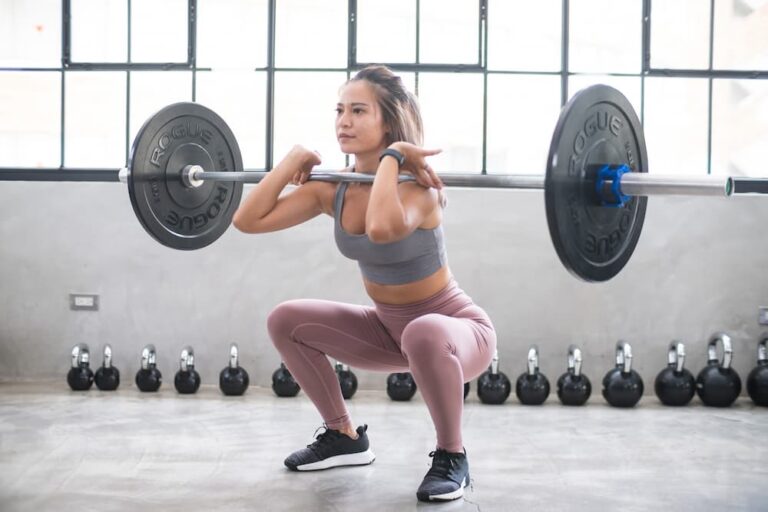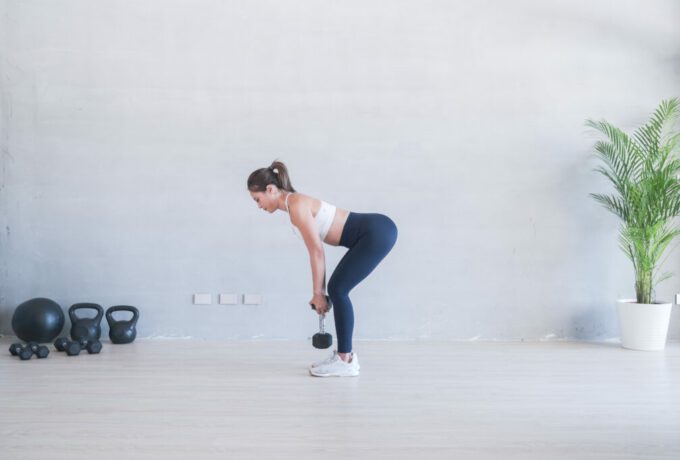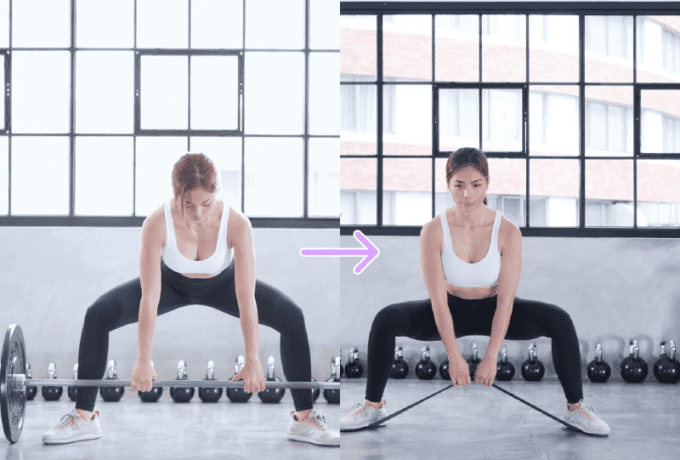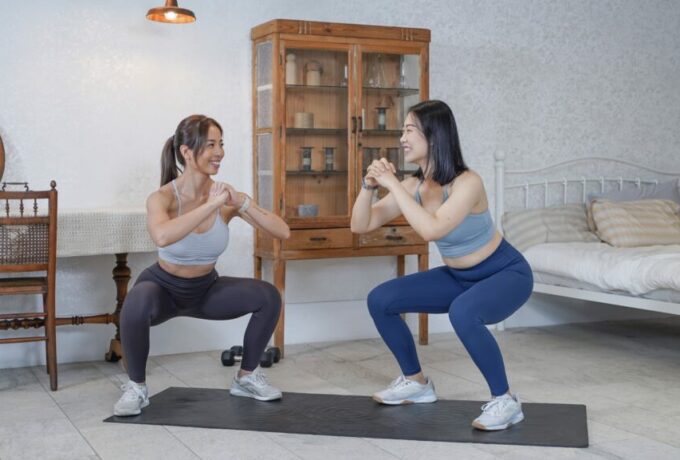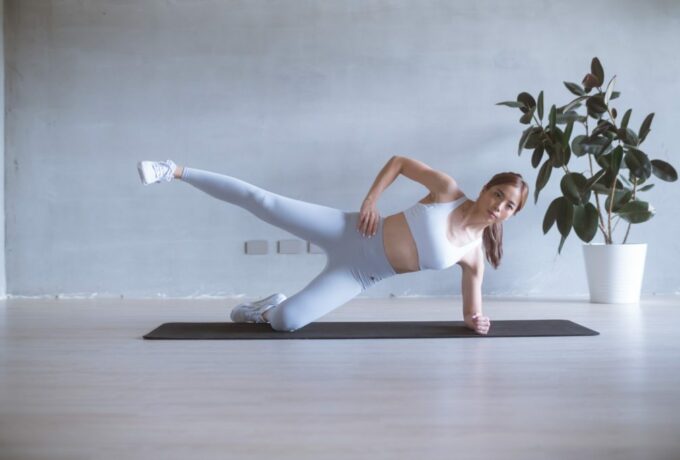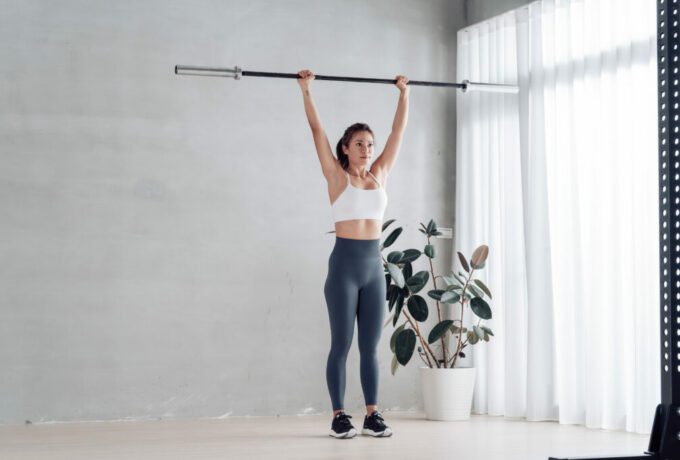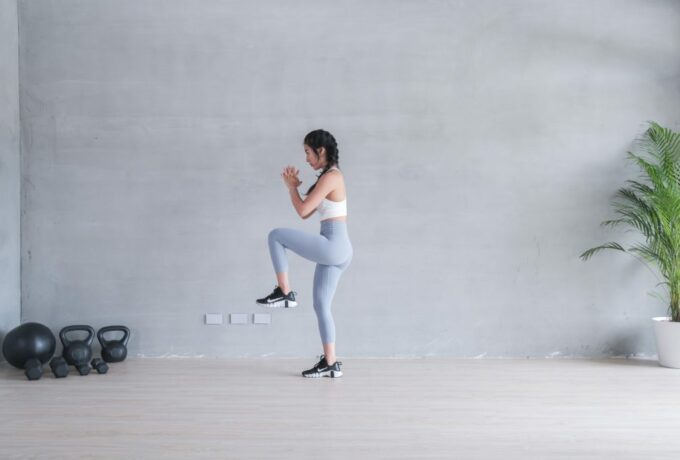The squat is a common movement in plyometric training, but many people experience knee pain after squatting. It’s important to be aware that your squat position may be problematic, and continuing to train with the wrong squat position can lead to knee injuries. So how do you know if your squat position is safe? The following tips will teach you how to observe your squatting position from the front, side, and back to check for correct movement.
First, from the front, squat down and observe two parts:
- Check if the torso is kept in the middle of both feet. If it’s tilted to one side, it means the center of gravity has shifted, which will cause one lower limb to bear more weight, increasing the load on the knee and causing pain.
- Check if the hip, knee, and ankle joints are in a straight line. This is the ideal weight-bearing position for the lower limbs. If the knee joints are shifted to the inside, which is an X-shaped leg position, it causes increased pressure on the knee joints and also overstretches the ligaments on the inside of the knee joints, causing pain. This is more common in individuals with insufficient hip muscle strength, especially in girls.
From the back, observe the shift of the center of gravity and the position of the kneecap, as well as the posture when squatting down:
- Check if the pelvis remains in the center of both feet. If it’s to one side, there’s an asymmetry in the center of gravity.
- Check if you can see the outer edge of the patella. If you can’t see the kneecap at all, it means that the kneecap is too far in, resulting in an X-shaped squat rather than the ideal hip, knee, and ankle line.
The main observation from the side is whether you have used your glutes well to squat or whether you have overused your kneecap:
- Observe the sequence of movements. The ideal sequence of deep squatting is to sit back with the buttocks and upper body leaned forward, and then the hip and knee joints together bending to squat down. The wrong deep squatting is to keep the body vertical and directly bend the knee joint to squat, using less gluteus and greatly increasing the pressure on the kneecap, which can cause knee pain.
- The ideal posture should be for the knee to slightly exceed the toe. If the knee is more than the toe, there’s greater pressure on the knee, increasing the risk of knee pain.

The main cause of knee pain in deep squats
The main cause of knee pain in deep squats is usually incorrect movements, which, when repeated frequently, can result in injury and pain. Adding extra dumbbell or kettlebell weight can increase the likelihood of injury. To avoid injury, use a mirror or video to observe whether your deep squat movement is correct, pay attention to whether the center of gravity is symmetrical, start the movement from the hip joint, ensure the knee joint is not shifted inward and not too much above the toe. This will help you train your lower limb muscles safely and protect your knees.
What can beginners do?
- Strengthen the core muscles: Training the core muscles helps maintain core stability and avoids wrong force when squatting.
- Start with unarmed squats: Begin with a mirror and unarmed squats to confirm your stability and accuracy before slowly adding weight. Start by getting used to the resistance of the barbell, then try the Smith machine, and then progress to the empty bar challenge.
We recommend referring to May’s hip training plan for new squats, as training the lower limb muscle

